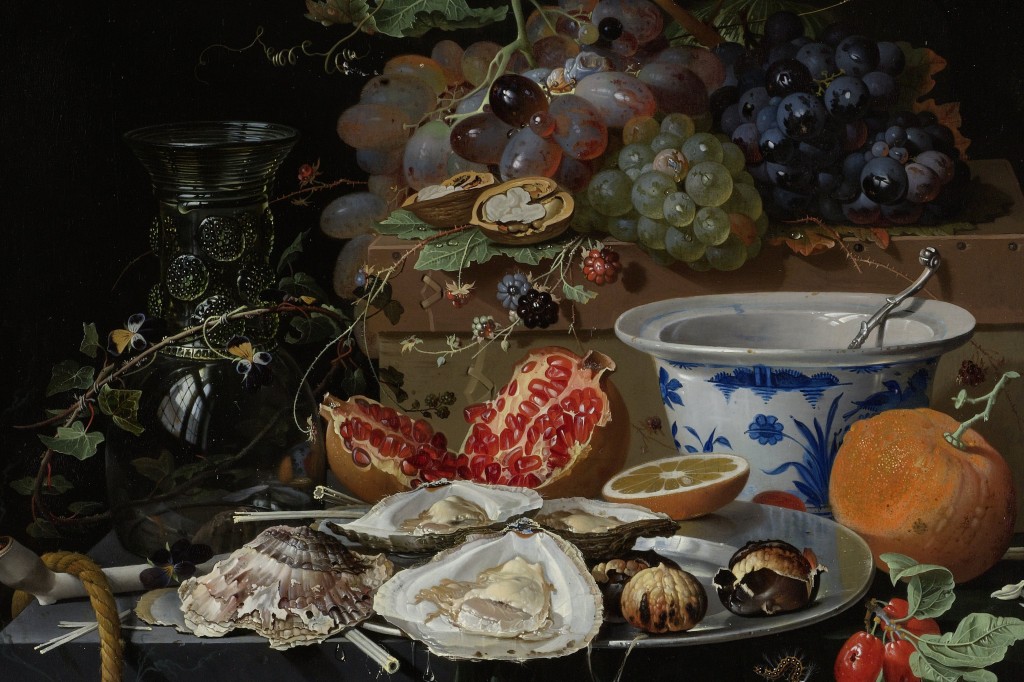The word aphrodisiac conjures images of oysters and chocolate, or perhaps peppers to ‘spice things up’. Nearly everyone knows that these foods have a long history of being considered aphrodisiacs. Yet it is worth devoting a little more attention to how these foods were described in the past because they are not a-historical – they are not the same in every era and are not understood in the same ways in every era. Indeed, the word aphrodisiac only began to be used to describe such foods in the late seventeenth century. At this time aphrodisiacs weren’t considered to be sexual curiosities but were widely understood to be a central component in the fight against infertility.

The number of foods described as aphrodisiacs was extensive. One list in the popular sex-manual Aristotle’s master-piece (1684) noted just a few of the foods described as aphrodisiacs in the period:
among such things as are inducing and stirring up thereto, are … Hen-Eggs, Pheasants, Woodcocks, Gnatsappers, Thrushes, Black Birds, young Pigeons, Sparrows, Partridge, Capons, Almonds, Pine-Nuts, Raysons, Currants, all strong Wines moderately taken; especially those made of the Grapes of Italy; but Erection is chiefly caused and provoked by Satyrium Eringoes, Cresses, Erysimum, Parsnips, Artichoaks, Turnips, Rapes, Asparagus, Candid Ginger, Gallinga, Acorns bruised to Powder, and drank in Muscadel, Scallions, Sea Shell-Fish, &c
Some familiar foods were considered aphrodisiacs by our early modern forebears – particularly oysters. A posthumous edition of Felix Platter’s A Golden Practice of Physick (1664) included oysters in a list of foods that would remedy a ‘Defect, or Want of Copulation’ – a disorder described as an inability to have sex and when ‘there is none or small pleasure in the act’. Oysters were said to nourish the body and increase sperm production. Their salty nature was probably also linked to their aphrodisiacal nature: Jacques Ferrand’s 1610 book on erotic melancholy argued that ‘salt things doe cause a kind of Itching or Tickling in those parts that serve for Generation’. It was not just medical writers who acknowledged the effects that oysters had on the body. Nehemiah Wallington, a seventeenth-century Puritan, recorded that in order to dampen his lustful thoughts he was “abstaining from divers meats as eggs and oysters and wine and many other things which I loved very well.”
Equally evident from the list above is that a far greater range of foods were considered to be sexually stimulating than today: parsnips, aubergines, leeks, onions, eggs, chick peas, eryngo and satyrion roots and nettles. Indeed, nettles are still considered to be an aphrodisiac by some internet sites offering up aphrodisiac recipes. In the early modern period both nettles and parsnips were well-known for their titillating virtues. In 1597, the botanical writer John Gerard described how ‘Nettle stirreth up lust’ and parsnips were known to ‘provoke urine and lust of the bodie’.
These foods were believed to do more than just stimulate lust – they also produced physical effects in the body that made men and women more fertile. Of course, by encouraging sexual intercourse to occur they increased the likelihood of conception occurring, but their effects went beyond this. Oysters and other nourishing foods were thought to encourage the body to produce seed, the fundamental matter of conception. Nettles and other warming foods ensured that seminal matter was cherished and didn’t lose its vital heat, one of the elements that made seed fertile and potent.
Medical writers frequently listed aphrodisiacs in their chapters on remedying barrenness. As Felix Platter’s text explained ‘the things mentioned to provoke Lust … are chiefly used for conception.’ Medical case studies also demonstrate the use of aphrodisiacs to treat infertility. Isbrand van Diemerbroeck described how he treated a man for a splinter in his thigh, but
The Country-man complained to me of another Malady no less ungrateful to his Wife, that his Inclinations to conjugal performance were utterly extinguish’d, and his Venereal Ability quite lost, which Malady he said had befallen him but since the Cure of his Thigh. Presently I suspected that this Languidness proceeded from the use of the Camphire, which I had mixed with the Balsam and other Plaisters; so that I forbore the farther use of it, and gave the Country-man Electuary of Dysatyrion to take, and prescrib’d him a Nourishing Dyet of Hot Meats, with Spices, Leeks and Onions, which restored him to that Degree that he followed his Wives Agriculture as he was wont to do.
Diemerbroeck was not just recording here that he improved the man’s libido. The agricultural metaphor implies that the intercourse resulting from this treatment would bear fruit and produce children. Early modern aphrodisiacs are then simultaneously familiar and unfamiliar: they were not just sexual curiosities, they were medicines widely discussed and, plausibly, widely used to promote fertility and remedy infertility.
 Jennifer Evans is a lecturer in history at the University of Hertfordshire. Her research focuses on sexual health and fertility in early modern England. Her first book Aphrodisiacs, Fertility and Medicine in early modern England was published by Boydell and Brewer in the Royal Historical Society New Studies in History Series in September 2014. Jennifer’s current research project explores ideas of men’s sexual health and masculinity in the seventeenth century. She is founding editor of the blog Early Modern Medicine and tweets from @historianjen.
Jennifer Evans is a lecturer in history at the University of Hertfordshire. Her research focuses on sexual health and fertility in early modern England. Her first book Aphrodisiacs, Fertility and Medicine in early modern England was published by Boydell and Brewer in the Royal Historical Society New Studies in History Series in September 2014. Jennifer’s current research project explores ideas of men’s sexual health and masculinity in the seventeenth century. She is founding editor of the blog Early Modern Medicine and tweets from @historianjen.

NOTCHES: (re)marks on the history of sexuality is licensed under a Creative Commons Attribution-NonCommercial-NoDerivatives 4.0 International License.
Based on a work at www.notchesblog.com.
For permission to publish any NOTCHES post in whole or in part please contact the editors at NotchesBlog@gmail.com





Pingback: Planting ideas: medicine and the garden in Daniel Turner’s De Morbis Cutaneis (1714) | Effaced From History?
Pingback: Sexual Curiosities? Aphrodisiacs in Early Modern England
Pingback: The Fascinating World of Aphrodisiacs - Secrets of Women